In an Android application, similar to an application market, I have a Home view and two other views contain lists. All these three lists will go to a list of products but with different arguments. And there is another view shows the product details view.
In such a scenario, when should I use Fragments and when should I use Activities? And how to determine? knowing that I search textbox in a tool bar which supposed to appear in the whole system.
The options I may have now is one activity in all the application contains the search toolbox. This activity will help in the navigation between fragments. The other option is to set the first 3 views in an activity, and the list of product in another activity, and the product details in a separated one.
